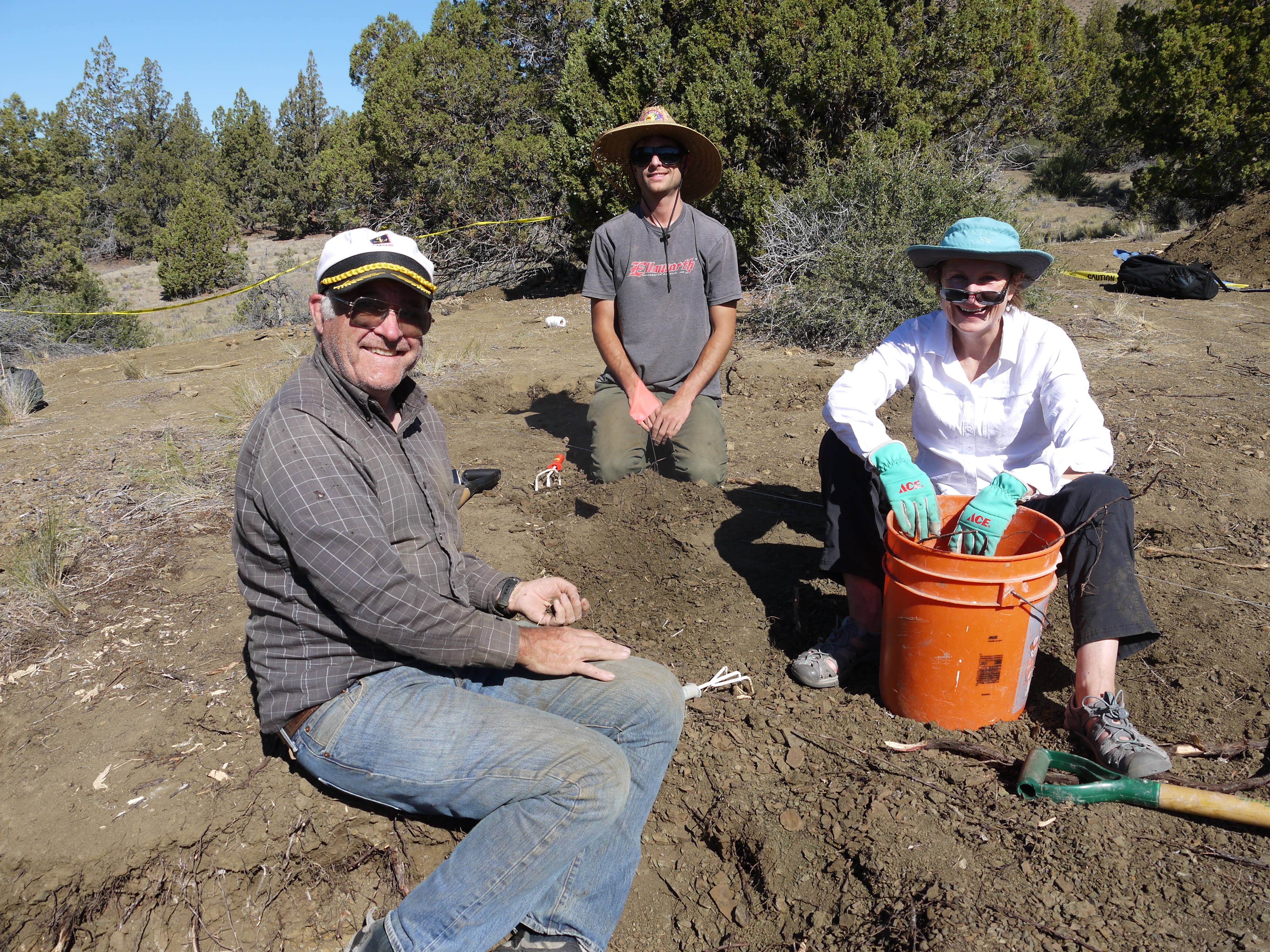
Volunteers at a 2021 fossil dig in Mitchell, Oregon search for dinosaur bones.
courtesy of Greg Carr
For over seven decades, fossil hunters have been digging in a spot near Mitchell, Oregon, where they have found plenty of ammonites and a single dinosaur toe bone. University of Oregon Emeritus professor Gregory Retallack, who found the bone, says that while he can deduce the animal was heavy, about 10-12 feet long, and likely an herbivore, you can’t get much more definitive information from a toe bone.
“We would like a diagnostic piece, like a piece of skull or a tooth or something,” Retallack said, “so that we could actually name Oregon’s dinosaurs.”
So a few years ago, the Bureau of Land Management granted a permit to Retallack to try to look for more bones at the dig site near Michell,, and he set out with a team of volunteers from a local fossil collecting group to see if they could uncover fresh clues from Oregon’s Jurassic past.
Greg Carr, a retired engineer and lifelong fossil hunter, organized volunteers from the North American Research Group to help.
“You can’t do a dig like this without having a lot of labor. You need people to shovel rock and to sift through things and to count pieces of shell,” Carr said. “And besides, people like to go dig in the rocks. This place is rewarding.”
In the end, their 2021 dig didn’t turn up dinosaur bones. But as the volunteers dug down into the dirt and rock at the Mitchell site, they began to notice a change in the character of the rock bed.
“It was about a meter thick and green and strange-looking, and it was absolutely full of fragments of ammonites. But all of these shell fragments were about the size of cornflakes,” said Retallack, who added that this is characteristic of a creature eating something hard and crunching it up into small pieces. Their theory is that the site was once home to a nesting colony of pterosaurs, a group of winged reptiles that were cousins of dinosaurs. “There’s no other reasonable explanation for that great amount of broken-up shell.”
Also, the amount of phosphorus in the rock bed was off the charts. “So these two lines of evidence led us to believe that what we were dealing with was a sort of a landslide, a debris flow of guano and shell fragments down into the shallow ocean,” Retallack said. “A meter-thick landslide of high phosphate and shell debris - that’s a pretty significant colony.”
While the dig was unsuccessful from the perspective of finding new dinosaur fossils, Retallack says it did deepen our understanding of what Oregon was like 100 million years ago.
Though it may also point to new clues about our prehistoric past we have yet to uncover.
“A pterosaur expert suggested to us that the pterosaur we’ve always known from Central Oregon might not be the one that actually chomped up the bone, that there could be two Oregon pterosaurs,” Retallack said. “So there could be another pterosaur out there which we need to find now as well. It goes on and on. This is what I really love about science, you know, even though I’m 71 years old, I’m still finding new things.”
From his perspective, Carr says just getting 82 volunteers out to the dig safely was an unqualified success. “It was quite wonderful actually to see people really turned on to fossils,” Carr said. “So in my mind, it actually was a very successful dig.”



